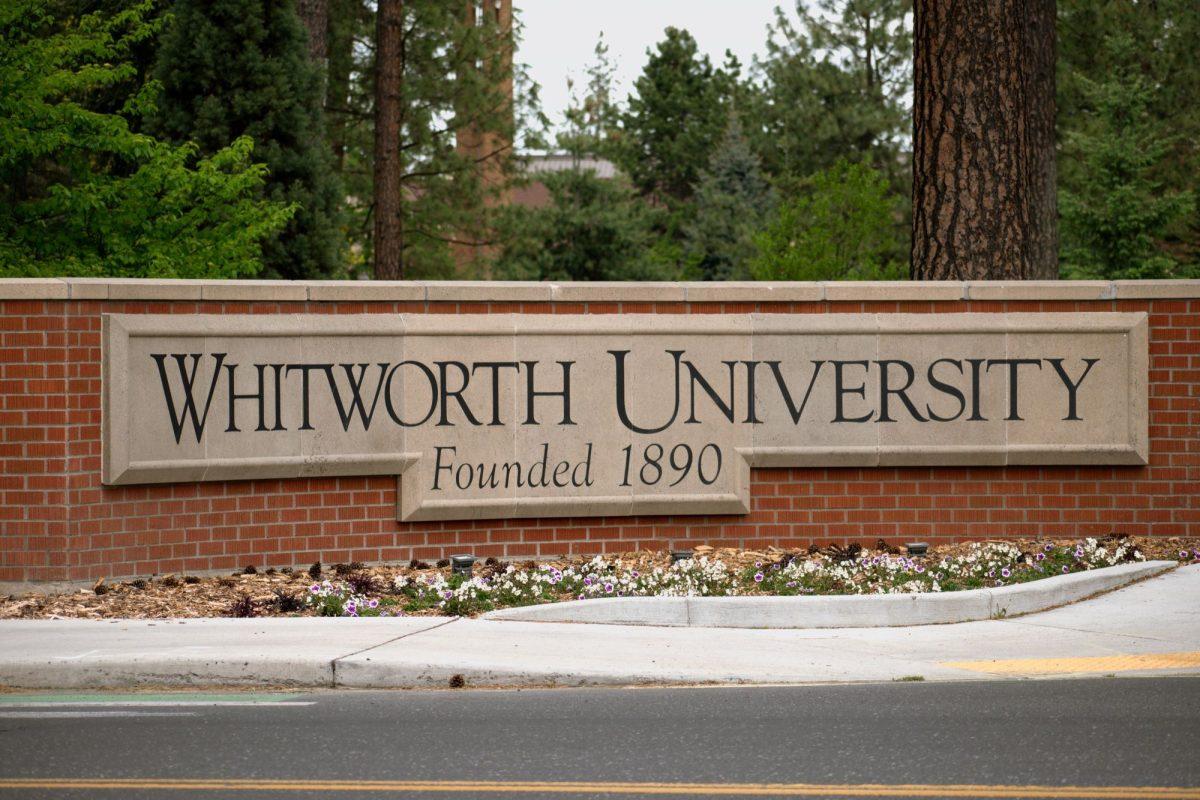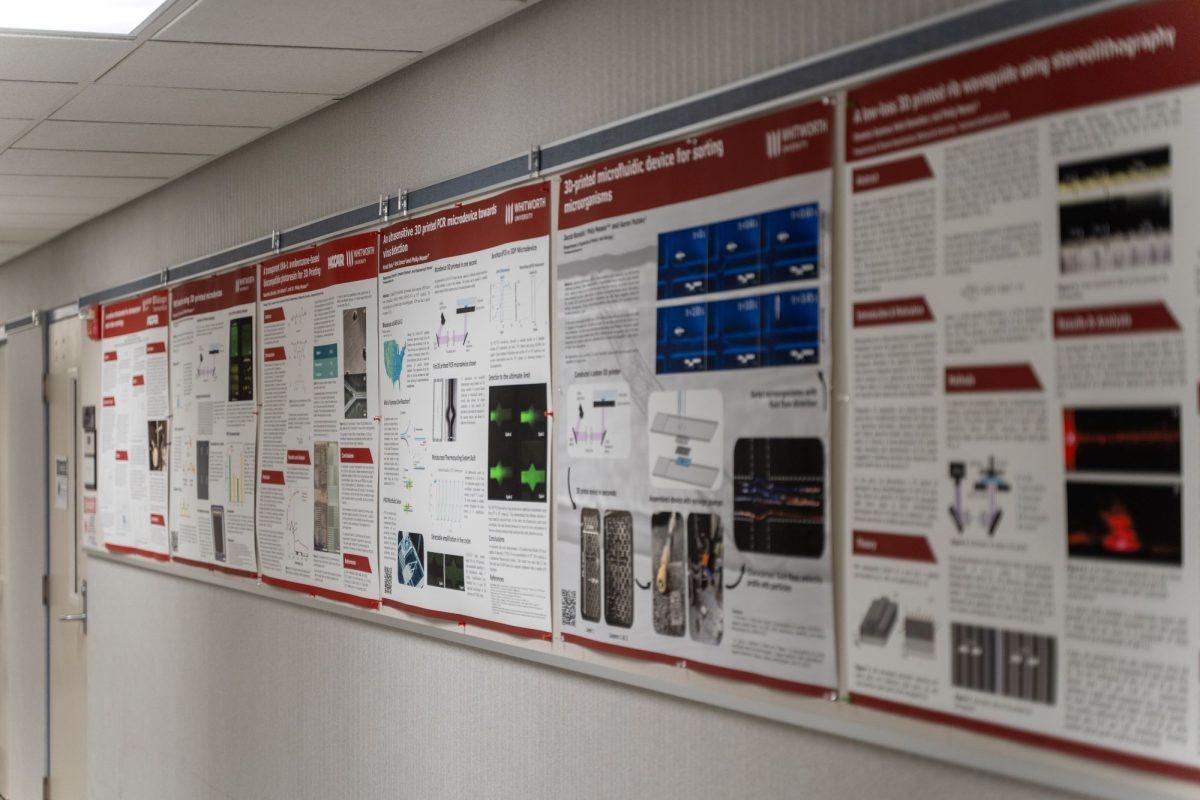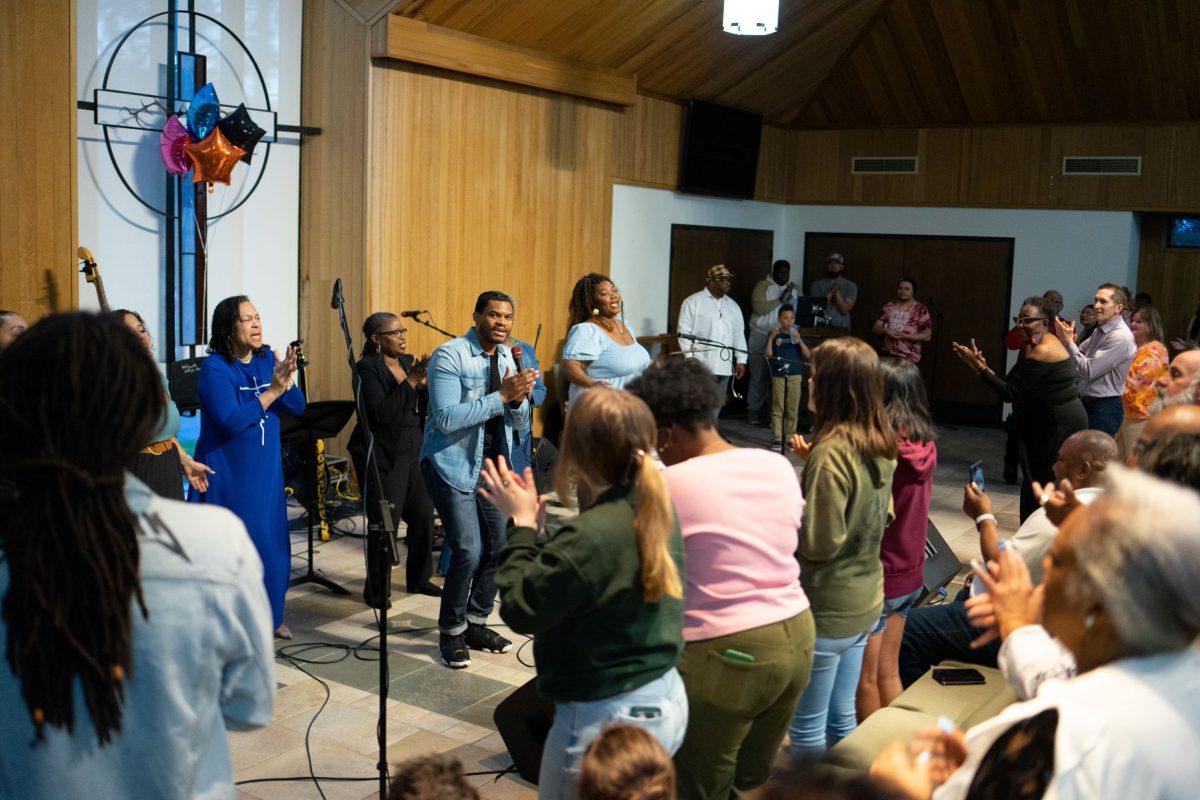Whitworth is now receiving energy from solar panels installed on top of the Aquatic Center. Construction began in December and was completed in January. The panels were officially turned on Feb. 22. So far the panels have generated more than 2,500 kilowatt hours. It is the first system of its size in Eastern Washington.
Western Renewable Energy, based in Coeur d’Alene, proposed installing solar panels to the university in 2011. The university decided to place the panels on the Aquatic Center roof because of its flat surface and square footage. The process stopped for about a year due to the transition of a new director of facilities. During the summer of 2012, the idea was proposed again and put into action.
There are 300 panels on the roof. Solar energy can be produced even when there is cloud coverage.
“We’re excited to see what we get through the summer,” resource conservation manager Jake Landsiedel said. “We’ve gotten pretty good energy over the past few weeks.”
The energy collected will be used throughout the campus. Landsiedel and director of facilities Chris Eichorst said they expect the panels to produce enough energy to power one of the small dorms, such as Stewart Hall.
Partnering with a private investor made the purchase of the panels possible. It generally takes up to 80 years for the panels to generate enough energy to pay for themselves. Because the investor covered much of the cost, it will only take 10 years of solar power production to pay off Whitworth’s share.
“The private investor is able to make this more feasible,” Eichorst said. “If we didn’t have a partner it would take a lot longer to get it done.”
Screws and nails were not used to keep the panels on the roof. Instead, the panels are weighed down by concrete ballasts. That method protects the roof and allows for easy removal if necessary. They are secure and can stand up to category 3 hurricane winds. The ballasts make maintenance easier and reduce the likelihood of future leaks in the roof.
Those who worked on the solar panel project have also brought up the idea of installing more solar panels. If this were to happen, the solar panels would likely be put on the HUB, Landsiedel said.
The solar panels were a main project for the Sustainability Committee. The committee is a mix of faculty, students, staff members and representatives across administrative levels.
“We are committed to make steps to be a carbon-neutral campus,” said Kerry Breno, professor of chemistry and a member of the committee.
The committee’s main commitment is to lower the greenhouse gas emissions of Whitworth by 5 percent from 2011 to this year as part of the Presidents’ Climate Commitment.
“Solar panels here and in Costa Rica help us make that commitment,” Breno said.
Along with the solar panels, the committee is working on a sustainability campaign co-sponsored by Sodexo to be held April 17-23. The campaign will educate students about food, volunteering and the climate.
A website that will monitor the solar production from the Aquatic Center’s solar panel system is currently being constructed. The website will give information about the amount of solar energy produced.
This web page is not yet open to the public because it is still being customized. When it is finished, it will be linked to the Sustainability Committee web page found on the Whitworth page. It is projected to be accessible within a month. Also, there will be a dedicated screen in the HUB which will cycle through the different displays so that students, faculty and visitors will be able to see how the solar panels are making Whitworth more eco-friendly.
Contact Catherine Porter at [email protected]





